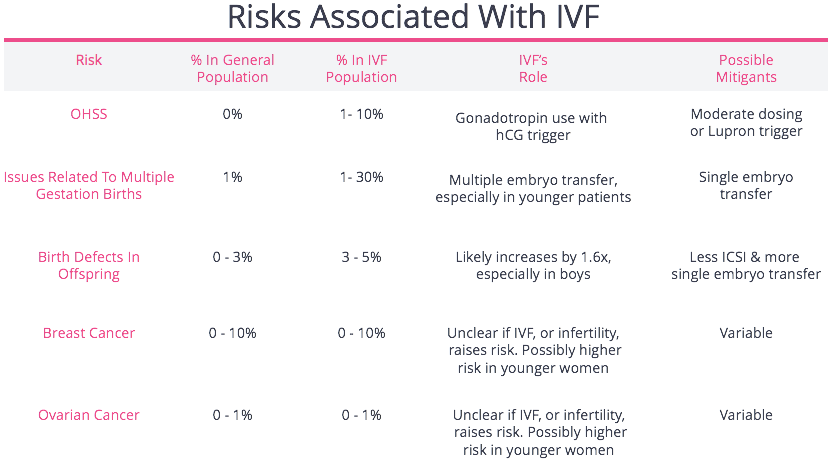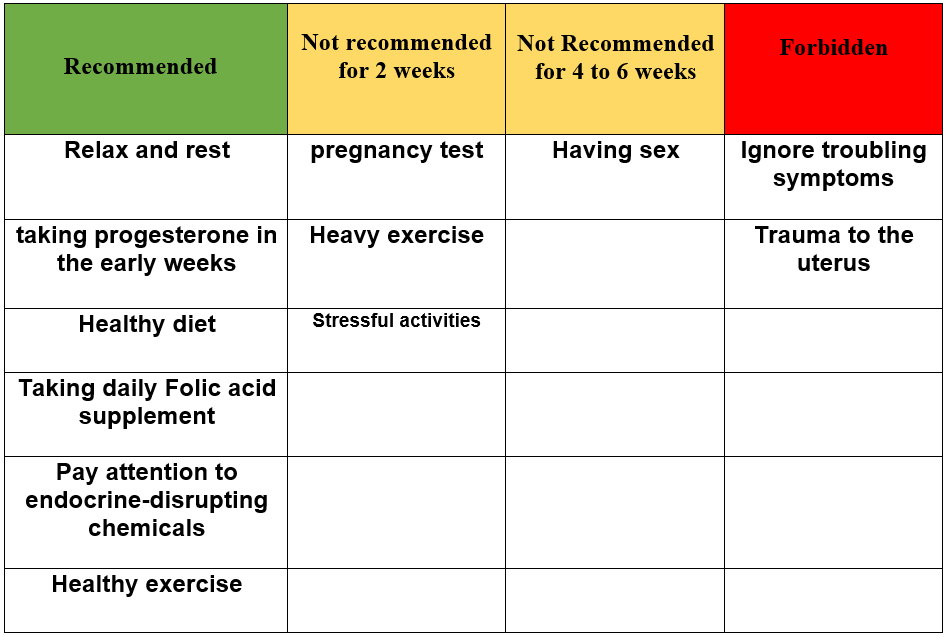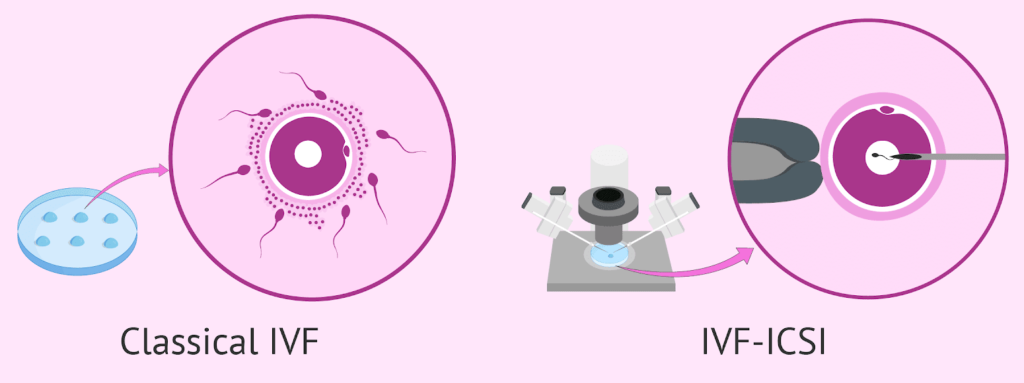In Vitro Fertilization (IVF): Success Rate – Risk – Cost
- May 7, 2022
- 0 Likes
- 1865 Views
- 5 Comments
Overview
ToggleInfertility Treatment - Everything you need to know about in vitro fertilization (IVF)
What’s In Vitro Fertilization (IVF) Exactly?
In vitro fertilization (IVF) is a complex series of procedures used to assist with fertility or prevent genetic problems and assist with the conception of a child.
During IVF, mature eggs are collected (retrieved) from ovaries and fertilized by sperm in a laboratory. Then the fertilized egg or embryos are transferred to a uterus. One complete cycle of IVF takes about three weeks. Sometimes these steps are split into various parts and the process can take longer.
IVF is the most efficient form of assisted reproductive technology. The procedure can be done using a couple of their own eggs and sperm. Or IVF may include eggs, sperm or embryos from a known or anonymous donor. In some cases, a gestational carrier – someone who has an embryo implanted in the uterus – could be used.
Your chances of having a healthy baby by using IVF depend on many factors, such as your age and the cause of fertility. In addition, IVF could be time-consuming, expensive and invasive. If more than one embryo is transferred to the uterus, IVF can result in a pregnancy with more than one fetus.
Your doctor can help you understand how IVF works, the potential risks and whether this method of infertility treatment is right for you.
Let's know a little about the different types of IVF procedures
The three main approaches of IVF include:
1- Natural Cycle IVF:
Natural cycle IVF involves no fertility drugs at all. The one egg you release as part of your normal monthly cycle is harvested and conceived with sperm as with conventional IVF. You’ll then continue with IVF treatment as normal. As your ovaries aren’t stimulated, you can try again sooner than with standard IVF if you wish.
You’re also less likely to bear multiple pregnancy (twins or triplets) than standard IVF and you’ll avoid all the risks and side effects of fertility drugs. This type of treatment is usually not recommended by doctors.
2-Mild stimulation IVF
With mild stimulation IVF, you receive a lower dose of fertility drugs over a shorter period of time than with standard IVF. That reduces your treatment time by about two weeks and means you get rid of a lot of the unpleasant side effects of the medications. Although there are still some health risks from mild IVF stimulation, they tend to be less general and less serious than with standard IVF.
3-Vitro maturation (IVM)
Normally in IVF you’ll be use a hormone to help your eggs mature before they’ve been harvested and fertilized. In IVM your eggs are harvested whilst they’re immature and allowed to mature in the laboratory, meaning you don’t have to consume any hormones. You can only have IVM if you are having intracytoplasmic sperm injection (ICSI), a type of fertility treatment used where there’s a male infertility factor.
Because IVM is a new technique there have been very little births from IVM compared to other types of IVF treatment. This means we cannot be 100% confident of its safety until there have been more healthy births and researchers have been able to observe the development of children as they have grown up.
Advantages and Disadvantages of IVF:
1. IVF Advantages:
A successful pregnancy and a healthy baby born are, of course, the biggest benefits of undertaking an IVF procedure! However, this result is not going to be the same for everyone who goes through IVF. Unfortunately, IVF is not the answer for everyone.
Another advantage of IVF is that it can be used to help bypass problems with woman’s fallopian tubes.
Confirmation of fertilization is also benefit of having IVF treatment. For some people, the cause of their subfertility is labeled ‘idiopathic’ (a technical term for unknown). In instances like this, it is possible that there may be a problem with the egg and sperm interacting in normal pattern, impeding an embryo creation. If the sperm and egg do not interact in an IVF cycle and no embryos are formed, this is called a ‘failed fertilization’. Whilst this is devastating for the couple, it can also provide some answers as to why they have not succeeded in achieving a pregnancy naturally in the past.
should a failed fertility be the result, then the next step would be considering having another IVF cycle, but this time try intracytoplasmic sperm injection (ICSI) as the method of fertilization. If this treatment fails to produce fertility, then it is time for the couple to reassess their options with their fertility specialist. With the advent of IVF using ICSI, men who have had a vasectomy or have a very low sperm count now have potential father children that are biologically theirs.
IVF can also be used as a treatment option enabling any embryos that have been created, to be tested for some abnormalities before they are transferred into the uterus (womb). In some instances, couples may be at risk of having children born with conditions such as Down’s Syndrome or Cystic Fibrosis, and using IVF with pre-implantation genetic diagnosis (PGD) or comparative genomic hybridization (CGH), the incidences of these conditions may be reduced.
2. IVF Disadvantages:
A clear disadvantage with IVF is that success is not guaranteed. In fact, less than 50 percent of all couples starting an IVF cycle will reach a pregnancy. Of those who do get pregnant, not all of the pregnancies will result in a baby: A little over 25 percent of IVF cycles started, result in a live birth.
Another disadvantage of IVF is because the process involves an operative procedure, there are associated risks of infection, anesthetic risks and hemorrhage. Ovarian Hyperstimulation Syndrome (OSS) is also a risk that is only associated with treatment where the ovaries are stimulated through the use of medications, to make multiple eggs. This of course is what occurs in IVF and as such, OHSS is a risk for patients undergoing this treatment.
Now Let’s see about risks of IVF:
• Multiple births
IVF increases the risk of multiple births if more than one fetus is transferred to your uterus. A pregnancy with multiple fetuses carries a higher risk of early labor and low birth weight than pregnancy with a single fetus.
• Premature delivery and low birth weight
Research suggests that IVF slightly increases the risk that a baby will be born early or with a low birth weight.
• Ovarian hyperstimulation syndrome
Use of injectable fertility drugs, such as human chorionic gonadotropin (HCG), to induce ovulation can trigger ovarian hyperstimulation syndrome, in which your ovaries become swollen and painful.
Symptoms typically last one week and include mild abdominal pain, bloating, nausea, vomiting, and diarrhea. If you become pregnant, however, your symptoms might last several weeks. Rarely, it’s possible to develop a more severe form of ovarian hyperstimulation syndrome that can also cause rapid weight gain and shortness of breath.
• Miscarriage
The miscarriage rate for women who conceive using IVF with fresh embryos is similar to that of women who conceive naturally – about 15% to 25% – but the rate increases with maternal age.
• Egg retrieval procedure complications
Using of an aspirating needle to collect eggs could possibly cause bleeding, infection or damage to the bowel, bladder or a blood vessel. Risks are also related to sedation and general anesthesia, if used.
• Ectopic pregnancy
About 2% to 5% of women using IVF will have an ectopic pregnancy – when the fertilized egg implants outside the uterus, usually in a fallopian tube. The fertilized egg can’t survive outside the uterus, and there’s no way to continue the pregnancy.
• Birth defects
The age of the mother is the primary risk factor in the development of birth defects, no matter how conceived the child is. More research is needed to determine if babies conceived using IVF might be at increased risk of certain birth defects.
• Cancer
Although some early studies suggested that there may be a link between certain medications used to stimulate egg growth and the development of a specific type of ovarian tumor, more-recent studies do not support these findings. There does not appear to be a significantly increased risk of breast, endometrial, cervical or ovary cancer after IVF.
• Stress
Use of IVF can be financially, physically and emotionally draining. Support of counselors, family and friends can assist you and your partner through the ups and downs of infertility treatment.

How much does IVF cost?
Costs usually vary according to the age of the women, But normally IVF cost in Iran its about 1600 $ to 2000 $.
Now let's know a little about preparing for IVF
Before beginning a cycle of IVF using your own eggs and sperm, you and your partner will likely need various screenings, including:
• Ovarian reserve testing
To determine the quantity and quality of your eggs, your doctor might test the concentration of follicle-stimulating hormone (FSH), estradiol (estrogen) and anti-Mullerian hormone in your blood during the first few days of your menstrual cycle. Test results, often used together with an ultrasound of your ovaries, can help predict how your ovaries will respond to fertility medication.
• Semen analysis
If not done as part of your initial fertility evaluation, your doctor will conduct a semen analysis shortly before the start of an IVF treatment cycle.
• Infectious disease screening
You and your partner will both be screened for infectious diseases, including HIV.
• Practice (mock) embryo transfer
Your doctor might conduct a mock embryo transfer to determine the depth of your uterine cavity and the technique most likely to successfully place the embryos into your uterus.
• Uterine exam
Your doctor will examine the inside lining of the uterus before you start IVF. This might involve a son hysterography — in which fluid is injected through the cervix into your uterus — and an ultrasound to create images of your uterine cavity. Or it might include a hysteroscopy — in which a thin, flexible, lighted telescope (hysteroscope) is inserted through your vagina and cervix into your uterus.
Do and don'ts after IVF Procedure:
You can know more about your post-IVF care in table below:

Why Smart Behan?
Smart Behan is the main platform to provide medical information to address your health issue. Our network introduces best hospital and centers in Iran offering high quality services and expert Best Doctors and Surgeons in Iran as well as booking appointment. You can manage your medical travel. Smart Behan accompanies you from airport to airport handling Welcoming, transportation, translation, medical treatment and last not the least follow up when you are back to home.
Smart Behan can also make an appointment with our Gynecologist DR.Mojgan Sayadi for your consultation and surgery.



5 Comments
zoritoler imol
What¦s Going down i am new to this, I stumbled upon this I’ve discovered It absolutely helpful and it has aided me out loads. I am hoping to contribut. aid other customers like its helped me. Great job.
gralion torile
I’ve read some good stuff here. Certainly worth bookmarking for revisiting. I wonder how much effort you put to create such a fantastic informative site.
gralion torile
Thank you for another informative website. Where else could I get that kind of information written in such a perfect way? I have a project that I am just now working on, and I’ve been on the look out for such info.
zoritoler imol
I?¦m now not sure where you are getting your info, however good topic. I needs to spend a while finding out more or working out more. Thank you for great information I was looking for this information for my mission.
zahra sheykh fakoor
Hello
I had an IVF in Turkey, but I have been feeling very hot for 3 months now. Can you help me in this?